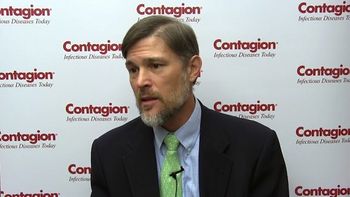
Matt Linam, MD, MS, Assistant Professor, Pediatric Infectious Diseases, University of Arkansas for Medical Sciences, explains a strategy used at his healthcare facility to prevent respiratory viral HAIs in children.

Matt Linam, MD, MS, Assistant Professor, Pediatric Infectious Diseases, University of Arkansas for Medical Sciences, explains a strategy used at his healthcare facility to prevent respiratory viral HAIs in children.

Lauri A. Hicks, DO, Director, Office of Antibiotic Stewardship, Centers for Disease Control and Prevention, discusses what we know about antibiotic prescribing habits among dentists.

In case you missed them, here are our top 5 articles for the week of April 9, 2017.
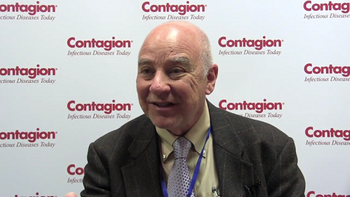
David A. Schwartz, MD, MS Hyg, FCAP, clinical professor of pathology at Medical College of Georgia, Augusta University, explains how congenital infection with Zika virus differs from congenital infection with other viruses.

Madeline King, PharmD, assistant professor of Clinical Pharmacy at the University of the Sciences, Philadelphia College of Pharmacy in Philadelphia, Pennsylvania, discusses the significance of the findings of her research on Ceftazidime-Avibactam.
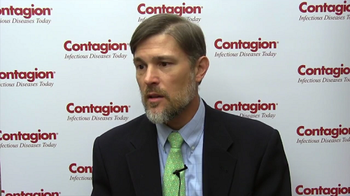
Matt Linam, MD, MS, Assistant Professor, Pediatric Infectious Diseases, University of Arkansas for Medical Sciences, explains how families and visitors can play a role in transmitting healthcare-associated infections.
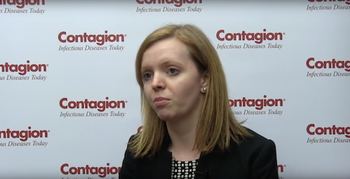
Emily Heil, PharmD, BCPS-AQ ID, assistant professor at the University of Maryland School of Pharmacy, and Contagion® Editorial Advisory Board Member, discusses how antibiotic allergies can affect stewardship.

Doctors Without Borders and humanitarian groups across Europe are coordinating their opposition to Gilead Sciences Inc’s patent for hepatitis C treatment sofosbuvir, the basis for the biopharmaceutical giant’s Sovaldi, Harvoni, and Epclusa drugs.
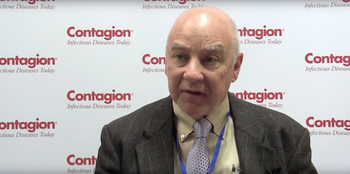
David A. Schwartz, MD, MS Hyg, FCAP, clinical professor of pathology at Medical College of Georgia, Augusta University, explains his research, which focuses on mechanisms of transmission of the Zika virus from mother to child.

Gonzalo Bearman, MD, MPH, professor of medicine, and hospital epidemiologist, Department of Internal Medicine and Infectious Diseases, Virginia Commonwealth University, discusses the aggressiveness of infection prevention strategies to stop Clostridium difficile outbreaks.

A recent study has found that individuals with chronic hepatitis B and C infections may have more to worry about; they may also be at increased risk for developing Parkinson’s disease. Not only this, but a change in the microbiome may also elicit the development of the disease.

In case you missed them, here are our top 5 articles for the week of April 2, 2017.

Lilian Abbo, MD, chief, infection prevention & control and antibiotic stewardship, Jackson Health System, associate professor of clinical medicine, Division of Infectious Diseases, Miller School of Medicine, University of Miami, explains the importance of rapid diagnostic testing.
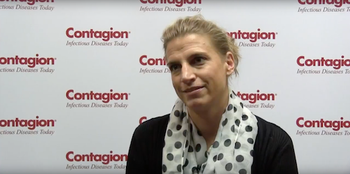
Alice Panchaud, PharmD, PhD, clinical pharmacist and pharmacoepidemiologist, CHUV, Lausanne University Hospital, Switzerland, explains how researchers can anonymously enter patient data to the international Zika virus registry, which collects data on women exposed to the mosquito-borne virus during pregnancy.

Emily Heil, PharmD, BCPS-AQ ID, assistant professor at the University of Maryland School of Pharmacy, and Contagion® Editorial Advisory Board Member, discusses some points to be mindful of when considering IV to PO conversions.
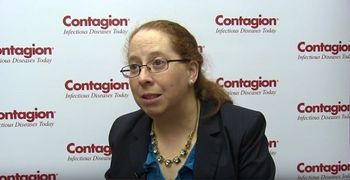
Belinda Ostrowsky, MD, MPH, Health Systems Director of Epidemiology, Antimicrobial Stewardship & Infection Prevention, Montefiore Medical Center, and Associate Professor of Clinical Medicine, Division of Infectious Diseases, Department of Medicine, Albert Einstein College of Medicine, discusses limitations to C. difficile testing that could impact stewardship practices in healthcare facilities.

Robert Bransfield, MD, DLFAPA, Associate Clinical Professor, Department of Psychiatry, Rutgers Robert Wood Johnson Medical School, examines the clinical and laboratory definitions of Lyme disease.

Top-line results of a phase 3 clinical study show that omadacycline met all US Food and Drug Administration primary and secondary endpoints and European Medicines Agency co-primary endpoints.

Emily Heil, PharmD, BCPS-AQ ID, assistant professor at the University of Maryland School of Pharmacy, and Contagion® Editorial Advisory Board Member, explains why it is important that antibiotic stewards understand pharmacokinetics and pharmacodynamics.

Rita Olans, DNP, CPNP-PC, APRN-BC, assistant professor at MGH Institute of Health Professions, explains the importance of involving nurses in antimicrobial and antibiotic stewardship programs in hospitals.

Robert Bransfield, MD, DLFAPA, Associate Clinical Professor, Department of Psychiatry, Rutgers Robert Wood Johnson Medical School, discusses the existence of chronic Lyme disease.
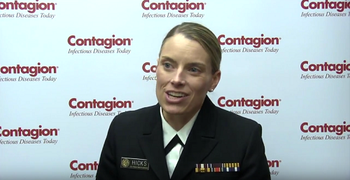
Lauri A. Hicks, DO, Director, Office of Antibiotic Stewardship, Centers for Disease Control and Prevention, explains an area of debate in the general medical field regarding antibiotics.
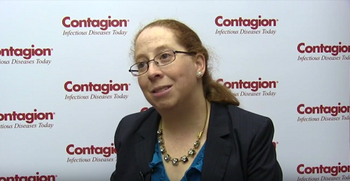
Belinda Ostrowsky, MD, MPH, Health Systems Director of Epidemiology, Antimicrobial Stewardship & Infection Prevention, Montefiore Medical Center, and Associate Professor of Clinical Medicine, Division of Infectious Diseases, Department of Medicine, Albert Einstein College of Medicine, explains how to be more sensible when it comes to testing for Clostridium difficile.

Matt Linam, MD, MS, Assistant Professor, Pediatric Infectious Diseases, University of Arkansas for Medical Sciences, explains the best ways to reduce the number of respiratory viral healthcare-associated infections in children.

In case you missed them, here are our top 5 articles for the week of March 26, 2017.
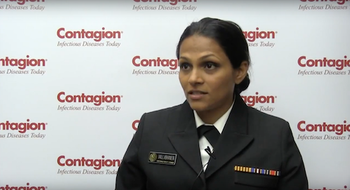
Snigdha Vallabhaneni, MD, MPH, Medical Epidemiologist, Mycotic Diseases Branch at the Centers for Disease Control and Prevention, discusses the threat that is Candida auris.

Nimalie Stone, MD, MS, Team Lead, LTC, Division of Healthcare Quality Promotion at the Centers for Disease Control and Prevention, explores the differences in infrastructure for clinical care and infection prevention in post–acute care and long-term care settings as compared to acute care hospitals.

Nicola Thompson, PhD, Epidemiologist, Division of Healthcare Quality Promotion, Centers for Disease Control and Prevention, discusses the lack of data on the burden of healthcare-associated infections in US nursing homes.

Emily Heil, PharmD, BCPS-AQ ID, assistant professor at the University of Maryland School of Pharmacy, describes what the ideal antibiotic stewardship team would look like.

New research suggests that the current National Health Safety Network (NHSN) catheter-associated urinary tract infection (CAUTI) definition may not truly reflect clinical UTI in neurosurgical intensive care unit (NSICU) patients.